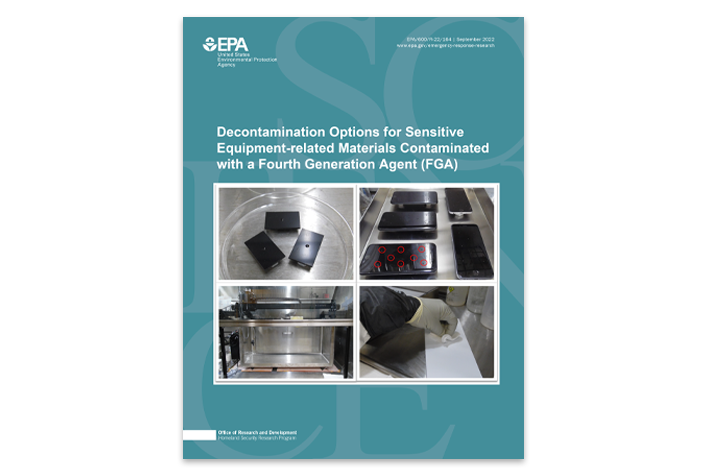Investigation of Fourth Generation Agent Decontamination Options

Project Brief
The Challenge
Because the U.S. Environmental Protection Agency (EPA) is tasked with cleaning up chemical agents after their accidental or intentional release, EPA’s Homeland Security Research Program (HSRP) systematically evaluates decontamination strategies for various chemical agents. A new class of chemical warfare agents, known as Fourth Generation Agents (FGAs), has recently emerged as a homeland security threat. This threat became a reality following a recent attempted poisoning with an FGA and a subsequent accidental release of that same FGA in Salisbury, United Kingdom. Due to lack of knowledge about how to decontaminate both sites and the first responder equipment, remediation of both incidents took almost a year. To improve remediation efficiency, EPA tasked ERG with evaluating and optimizing options to decontaminate sensitive equipment exposed to FGAs.
ERG's Solution
For this project, ERG partnered with Avarint, Inc. to conduct a series of tests in Avarint’s chemical defense laboratory to determine the efficacy of FGA decon options. We first applied an active FGA to sensitive equipment (laptops and cellphones) that first responders would likely use in a field setting to decontaminate an area exposed to the FGA. Our team then designed and conducted tests to apply potential decontaminants and determine their efficiency. We also evaluated the efficacy of various physical application techniques, including patterns of spray application, quenching, and wiping. ERG statisticians conducted a thorough statistical analysis of the experimental results, which demonstrated a high level of confidence in reported efficacies of the decontamination procedures (a confidence level that is particularly important for methods used to decontaminate deadly agents). ERG documented the research results in a final report, Decontamination Options for Sensitive Equipment-Related Materials Contaminated with a Fourth Generation Agent (FGA), published by EPA, and presented the results at the subsequent biannual EPA International Decontamination Research and Development Conference. The resulting new information about the efficacy of FGA decontamination options is expected to inform response to future FGA releases by EPA and other federal, state, Tribal, and local agencies.
Client
U.S. Environmental Protection Agency